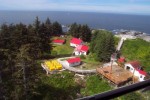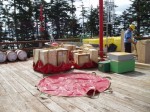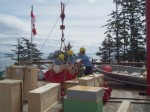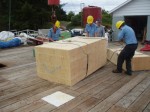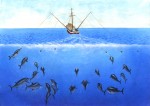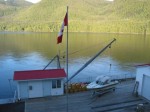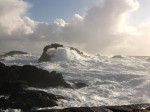“MV Queen of Prince Rupert” Aground in Gunboat Pass August 25, 1982
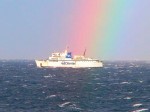
Before you read the story, I must fill in a few details. My wife Karen and I were on McInnes Island lighthouse at the time of the incident. A week before the incident below we picked up the voice of the lightkeeper Henry Bergen at Dryad Point on our scanner in the house. In a loud and agitated voice he was calling “Queen of Prince Rupert! Queen of Prince Rupert! This is Dryad Point! Dryad Point! You are going the wrong way!” The reply came back that they were on a navigational exercise and they had everything in hand.
**************************
Now the story from Harvey Humchitt1 who was on board the ship a week later . . .
It was a typical Friday in Bella Bella. My mother and brother and I had been preparing for a day trip to Port Hardy before the start of school. The trip to Port Hardy was on the “MV Queen of Prince Rupert” which took 6 or 7 hours from Bella Bella to Port Hardy. For me back then it was a holiday in itself. Continue reading “MV Queen of Prince Rupert” Aground in Gunboat Pass 1982
